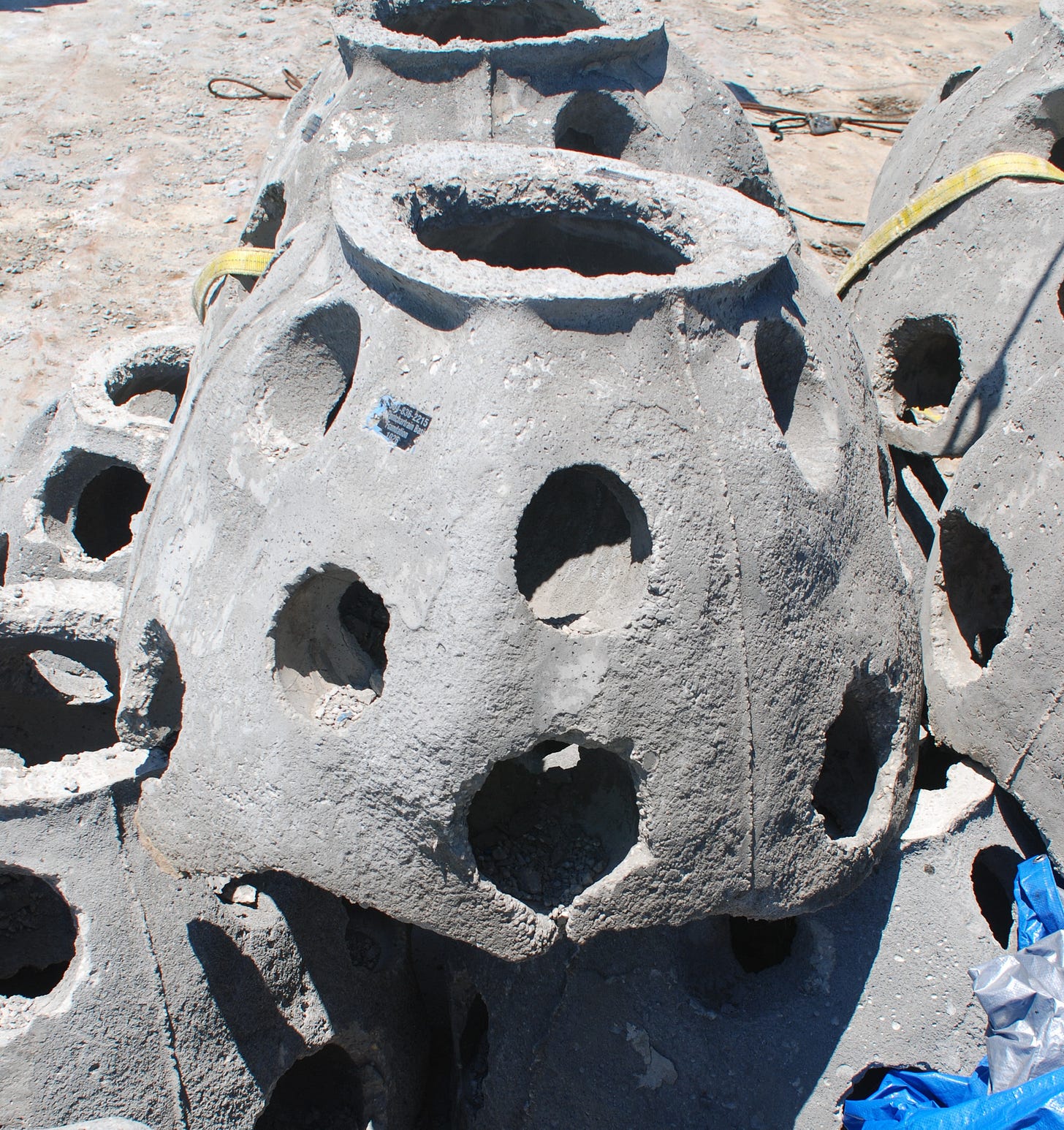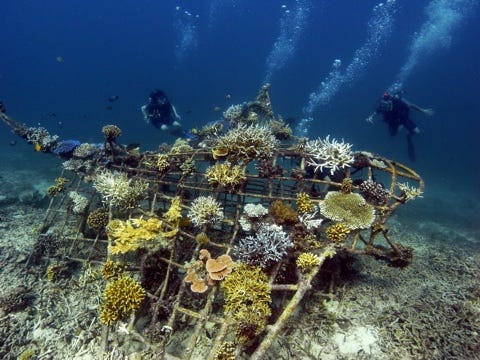How are artificial reefs created?
Building a reef from scratch sounds like a classic humans-are-better-than-other-animals power trip, and in many ways, that's exactly what it is. But at this point, after the anthropogenic rise in seawater temperature has killed many reefs, it's now our responsibility to do something about it. The difference between success and an expensive pile of rubble on the seafloor comes down to understanding what marine life actually wants. And for surf reefs, what waves need to break properly.
Early artificial reef projects were disasters disguised as good intentions. People dumped everything from old tires to subway cars into the ocean, thinking fish would appreciate any hard surface. The classic example is using cinder blocks, which are literally designed to be lightweight and easy to break in half. Predictably, these all scattered across the seafloor after the first decent storm, flying into actual reefs. The design process is reminiscent of the Taco Bell 2am special, "dump and pray."
Learning from these failures, modern reef construction focuses on materials that won't poison everything around them. Materials must be non-polluting, durable, and capable of withstanding harsh marine conditions over extended periods while maintaining a pH similar to seawater. Concrete has become the go-to choice because it's stable, relatively inert, and provides excellent surfaces for marine growth. Other construction methods range from massive sandbags like those used at Narrowneck Reef to cutting-edge biorock technology that uses electric currents to crystallize limestone directly from seawater.

The biological side of reef creation is surprisingly straightforward. Reef balls - concrete structures in the shape of half a ball with holes that are becoming standard - provide immediate complexity for marine life. The holes and rough surfaces give algae and small organisms places to attach, which then attracts fish looking for food and shelter. Biological colonization happens fast. Within months, artificial structures become living reefs covered in algae, sponges, and all the marine life that follows.
The creation of surf reefs gets more complicated because now you need to satisfy both the new marine life and people with flexible jobs. The key challenge is forcing waves to break in a controlled manner while maintaining the right speed and shape for surfing. Waves need to encounter the reef at just the right depth - too shallow and they close out violently, too deep and they roll over without breaking. The reef must also create the proper peel angle, allowing waves to break progressively along their length rather than all at once.
Wave focusing is a critical tool in surf reef design. Just like how a lens concentrates light, a properly shaped reef can concentrate wave energy from a broader area into a focused breaking zone through refraction. This wave amplification effect can create larger, more powerful waves than would naturally occur at that location.
The real challenge comes when trying to satisfy both ecological and surf requirements. A reef optimized for marine habitat might create chaotic wave patterns, while a surf-focused design might fail to support diverse ecosystems. The best projects find compromises that work for both - creating structures complex enough for marine life but organized enough to produce clean, rideable waves.

Narrowneck Reef demonstrated both the potential and limitations of surf reef design. While successful at coastal protection and marine habitat creation, it rarely gets surfed despite producing rideable waves. The reef sits 300 meters offshore, making it inconvenient for most surfers when world-class breaks like Burleigh and Kirra are nearby. The project highlighted that technical success doesn't always equal practical success.
Whether restoring damaged ecosystems or crafting the next perfect surf break, success depends on considering both the creatures that will call it home and the waves that will break over it. It's another subject in the ocean that is harder than it looks.
Further Reading:


Wow great article, I never know how they were made.